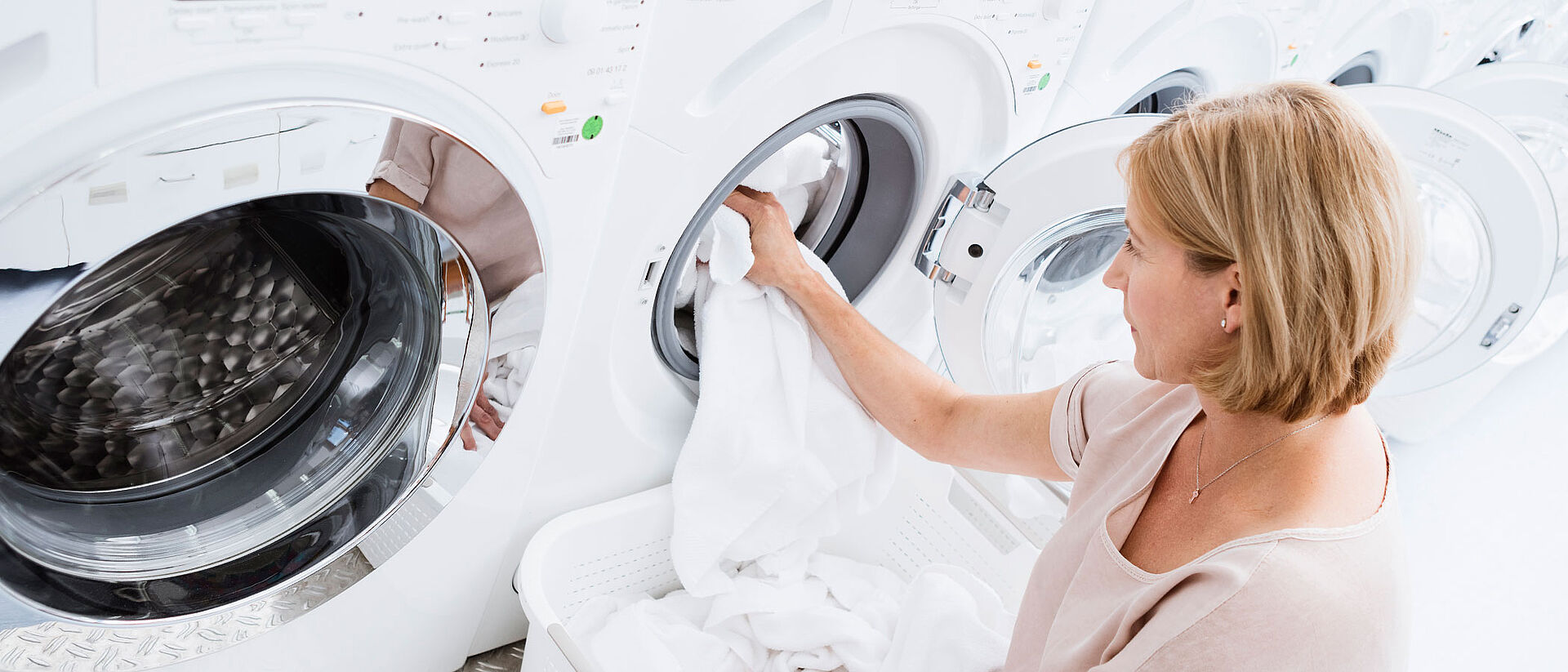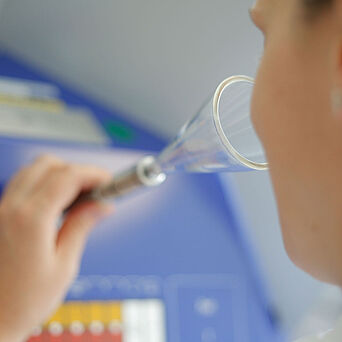Detergent tests for maximum quality
Detergent performance tests
When it comes to the quality of detergent and cleaning products, one aspect stands clearly at the forefront: do the substances ensure perfect cleanliness? For decades, Hohenstein has made a significant contribution to ensuring the high quality of detergents and washing agents.
When conducting the tests in our well-equipped household laundry technology facilities, our specialists compare the performance of the products beyond just their cleaning effect. We also investigate your products with regard to other primary and secondary washing effects and other important quality criteria.

Investigation criteria:
- Stain removal of natural stains
- Removal of dirt on dirty test fabrics
- Cleaning effect and/or dirt dispersing capability
- Loss of firmness and/or chemical damage of the washed item
- Inorganic and/or organic fabric encrustation
- Retention of colour tone and/or surface protection
- Colour transfer prevention in the Linitest device and/or in the washing machine
- Legibility and clarity of packing information
- Disinfection effect
The tests are particularly suitable for:
- Heavy-duty, colour and mild wash detergents (powder, tablets or liquid products)
- Descaling products (powder, tablets or liquid products)
- Booster products (e.g. stain salts, pretreatment products)
- Colour or dirt catcher sheets
Comparative detergent tests for better market transparency
Our investigations are usually conducted as comparative product or detergent tests, in other words, in the form of objective performance comparisons in which we test your detergent with regard to defined characteristics.
We test your product against at least one reference product and, in doing so, we attach great importance to the practical design of the test conditions and use current regulations and standards. The reference product can either be a previous model of your product or a sample from another manufacturer in the sense of benchmarking.
With this objective comparability of the individual products, we achieve the necessary market transparency expected today by consumers, retailers and manufacturers in equal measure.

Malodour tests for detergents
In addition to their cleaning effect, an important performance characteristic of detergents is whether and to what extent undesirable odours such as sweat remain in the textiles after washing.
With our malodour tests, we are able to assess detergent products such as powders, liquid detergents or gel caps in terms of how much they reduce or completely prevent sweat odour.
We can currently offer you the following test procedure for this purpose:

Technical test
- Scope:
Assessment of the sweat odour intensity of artificial sweat after 1 wash - Odour application:
Hohenstein artificial sweat is applied in defined way on a suitable textile (e.g. PES). - Assessment:
The sweat odour intensity is assessed by trained odour panelists according to VDI 3882 using an olfactometric unit.
Wash and wear test with panellists
- Scope:
Assessment of the sweat odour intensity after 5 wash and active wear cycles - Odour application:
Garments (e.g. sport shirts) are worn by test persons in an application-specific activity. - Assessment:
The sweat odour intensity is assessed by trained panelists according to VDI 3882 using an olfactometric sampling unit or/and directly by consumer panelists.
Testing the efficacy of household laundry disinfectants and hygienic rinsers
Where textiles contaminated with germs cannot be hygienically cleaned by high washing temperatures or the use of known household remedies, laundry disinfectants and hygienic rinsers help to prevent pathogens from spreading in the household, even at low temperatures of 20 to 40°.
Based on the test standard DIN EN 17658:2022-11, we offer you a standardised test procedure that allows to independently evaluate the disinfecting effect of detergents and rinsers for domestic use. Our simulation test of a common household washing procedure makes it possible to consider the disinfection performance of your product separately for the main wash cycle and the rinse cycle.
In addition, our test method is also suitable for evaluating biocidal detergents in terms of their ability to prevent bad odours or aesthetic impairment caused by microorganisms.

Your benefit as a customer
- Normative test report with detailed results
- Objective determination of the bactericidal and levurocidal effect of the washing chemistry used for household laundry
- Determination and specification of the effective dose for germ elimination
- Basis for the preparation of instructions for use
- Simulation of a household washing process for temperature-sensitive textiles
(temperature range between 20 and 40° C)
Test strains used
Obligatory test strains:
- Pseudomonas aeruginosa ATCC 15442
- Escherichia coli ATCC 10536
- Staphylococcus aureus ATCC 6538
- Enterococcus hirae ATCC 10541
- Candida albicans ATCC 10231
Additional test strains (optional):
- Dermatophytes
- Microorganisms associated with malodour



